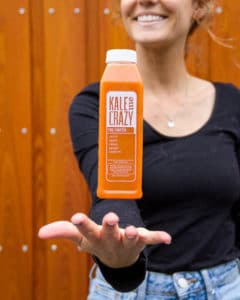As a founder, it can be difficult to predict whether an idea will be part of a long-lasting business trend or simply a fad. This piece will discuss how to tell the difference between a fad and a business trend as well as how to ensure that your company is here to stay.
What is the difference between a fad and a business trend?
Although fads have tons of initial hype and excitement surrounding them, they’re ultimately short-lived. A trend lasts longer—people aren’t going to lose interest within a few years. And with the right approach, savvy entrepreneurs can transform a business trend into a mainstay—an industry standard.
Take frozen yogurt, poké, or juice bars.
I started Yogli Mogli, my former froyo company, to capitalize on the popularity of soft-serve frozen yogurt. Despite being one of the first people to bring Froyo to the East Coast, the market moved incredibly fast. Before I knew it, there was a froyo store on practically every corner.


Make sure your business isn’t a fad – do your market research with Crunchbase Pro. Try it free.
But soon after the boom, many stores closed down because the market was oversaturated. Once the market levels out this way, only the best brands—with superior products, locations, customer service—survive.
Fortunately, Yogli Mogli stayed ahead of the competition, and we were one of the few froyo chains that lasted long term.
3 ways to ensure your business is here to stay
If you want to dominate a trend and eventually become a mainstay, you need to follow (at least) these three steps:
1. Keep your eyes open, and ears tuned, toward business trends.
Before you even think about entering the market, you need to cultivate an awareness of what’s popular. What are people interested in? What are they talking about? What’s trending? You need to be asking yourself all of this.
Talk to people in person, online, in the community, and elsewhere. Listen to what excites them and what they want to buy. Explore social media for popular hashtags and participate in relevant business groups to keep up with industry news.
If you’re always on the alert for new business trends, you’ll be well positioned to jump in when you find one that interests you. An important part of this process is assessing whether a trend is something you truly want to get involved in. I identify trends all the time, but they don’t all speak to me. If it’s not in an area you want to get involved with, or a concept that genuinely excites you, stay away.
2. Believe in the business trend.
To succeed in any trend-oriented business, you need to believe in its staying power.
Don’t enter into a market just because other people think it’s popular. Instead, find a trend you connect with and trust will be relevant in the long term, then commit to it.
But being early to the market is also an important factor in your success, so you can’t wait too long to take action.
Before I started Kale Me Crazy, I noticed demand for quick, healthy, casual food. I saw a big emphasis on looking and feeling good on social media, and I just knew this was the next big thing.


But when I shared my business plan, a lot of investors warned me it would fail. They insisted the market wasn’t ready for a chain of “quick and healthy” restaurants, and told me my concept would never gain traction – a business fad rather than a business trend.
To be honest, I knew it was a risk. After all, there was literally nothing like Kale Me Crazy in the southeast. But I believed in my idea, and I knew I had the skills and ability to execute it.
Today, we have dozens of successful locations in five different states and are growing rapidly.
3. Practice the fundamentals of any strong business.
If you put the right concept in the right location with the right operator, it will thrive.
First, you need to make sure that the business you’re bringing to a community is something they want and need.
Second, don’t settle or rush into selecting a location. Choose the right location for you in terms of size, layout, accessibility, parking, and anything else that is a priority for your business.


The third component is you. Ask yourself whether or not you believe you can do it best. From daily operations to local marketing to customer service to product quality, you’re going to make the difference.
For every strong trend, there are going to be a lot of people jumping on it, wanting to make money. But the market will always level out and reveal which businesses were fads and which were trends.
Roi Shlomo is the founder and CEO of Kale Me Crazy, a healthy, quick and casual food franchise.






